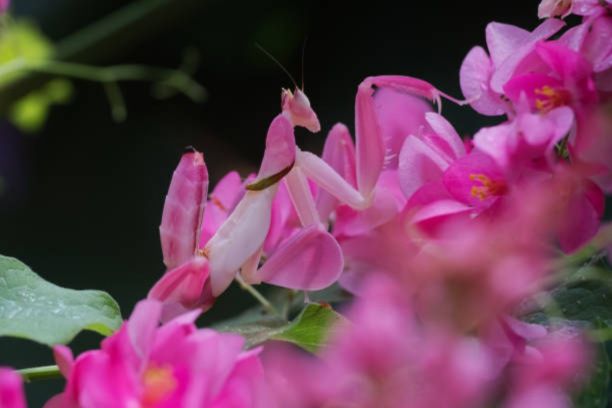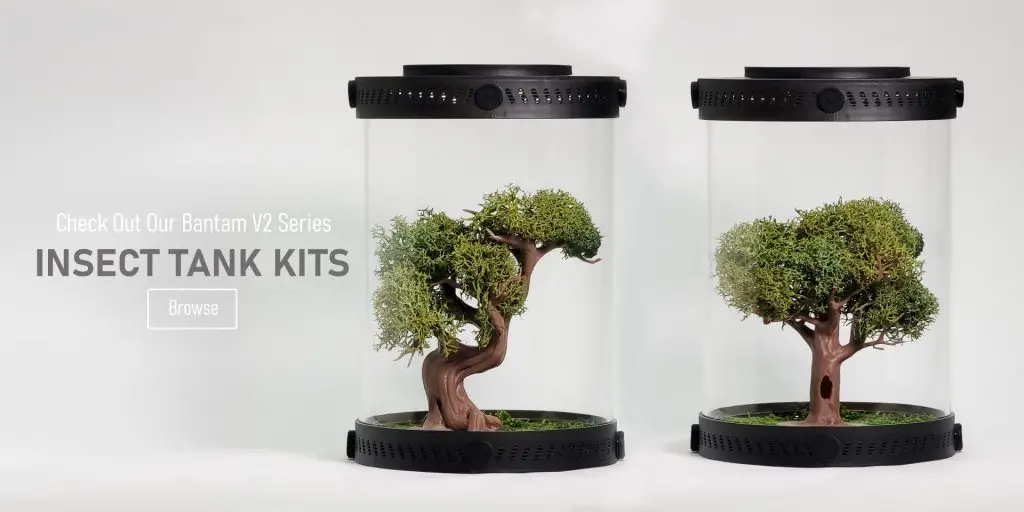Are you interested in keeping an Orchid Mantis as a pet, but don’t know what type of food to buy?
Orchid Mantis food can be considered unique to most traditional pets and it can be tricky to know exactly how to feed one.
Don’t worry, this guide will help you understand what to feed your Orchid Mantis and how to do it.
We’ll explore what Orchid Mantis eat, show you where to buy the food, and provide you with tips on how and when to feed them.
We’ve also included some common mistakes that people make in food handling, so you can avoid them.
Read on to start your Orchid Mantis food journey!
Table Of Contents:
ToggleWhat Does Orchid Mantis Eat?
Orchid Mantis is typically found in moist, tropical climates and they feed on other insects such as flies, beetles, ants, and springtails.
In the wild, Orchid Mantis also feed on natural prey items like crickets, grasshoppers, invertebrates, etc.
Interestingly enough, they are also known to feed on nectar and pollen, which can be found in flowers.
They use their coloration to help blend in with natural surroundings and catch unsuspecting prey.
When in the wild, Orchid Mantises can usually be found sitting on a flower waiting for its prey to pass by.
In some rare cases, wild Orchid Mantis are even known to feed off of other Mantis, so it’s important to try and prevent this in captivity.
Create the perfect home for your mantis with our Customizable Mantis Enclosure Kits, designed to meet all their habitat needs.
Buy Orchid Mantis Food
One of the most important things when looking to buy Orchid Mantis food is to make sure you get the right kind.
You want to look for live food that is specifically designed for predatorial insects, such as the type of feeder bugs you can buy from pet stores or online retailers.
Feeder insects can be gut-loaded and contain the right amount of vitamins and minerals, as well as proteins, that the Orchid Mantis needs to stay healthy.
Additionally, buying live insects instead of catching them outside may not seem to be as convenient but in the long run it will prove to be safer.
How To Feed An Orchid Mantis
This Orchid Mantis food feeding guide provides clear instructions on how to effectively feed your pet live food and will help you provide your pet with the nutrition it needs.
By following the steps outlined in this guide, you’ll be able to easily feed your mini pet and make sure it’s healthy and happy.


Materials:
Steps to feeding an orchid mantis
When To Feed An Orchid Mantis
When it comes to feeding an Orchid Mantis, timing is important.
You will want to feed them only once every few days, and it is best to do so in the morning.
This gives your mantis enough time to feed and for any uneaten food to be cleared away.
You also should not feed your Orchid Mantis right before their molting, as they need to be eating less due to the stress of the process.
Additionally, it is important to keep the mantis’s dietary needs in mind when feeding.
For example, young Orchid Mantis need more frequent feeding while adults need less.
Once you get to know your mantis, you’ll be better able to determine the ideal feeding schedule for them.
Common Mistakes
Feeding an Orchid Mantis may sound simple, but there are some common mistakes that people make.
One common mistake is overfeeding. Orchid Mantis should not be fed large meals every day as they can get an upset stomach.
Another mistake is feeding them too often. Orchid Mantis that are overfed can become lethargic and uninterested in other activities.
It is best to feed them a few meals every few days and supplement them with live insects once a week.
Some people also mistakenly feed their Orchid Mantis dangerous foods.
Many supermarkets and pet stores sell food that contains too much sugar or fat, which is unsuitable for Orchid Mantis.
It can be difficult to tell which foods are suitable, so it’s best to research and stick to a brand that specializes in producing safe Orchid Mantis food.
Finally, be sure not to feed your Orchid Mantis live insects that may have been collected from the wild.
These can be dangerous and can even harm your orchid insect.
Conclusion
Feeding Orchid Mantis is not an overly complicated task, but it is important to take some time to learn the basics.
This DIY Orchid Mantis food guide will help you get started with the right type of food and the right technique.
Don’t forget to avoid some of the common mistakes we covered, like buying too much food or feeding them too often.
With a little practice, you’ll be an Orchid Mantis food expert in no time!
Create the ideal habitat for your praying mantis with our species-specific soil mixes and Insect Enclosure Kits. These products provide everything you need for a thriving Mantid habitat.
Frequently Asked Questions
No, orchid mantises do not typically eat fruit. They are carnivorous and primarily feed on insects.
Orchid mantises primarily drink nectar from flowers, but they may also drink water droplets from rain or dew on plants.
Yes, orchid mantises are known to eat a variety of insects, including flies.
They are ambush predators and will wait patiently for their prey to come within striking distance.
Yes, you can feed your orchid mantis crickets as they are a suitable prey item for them.
However, it’s important to ensure the size of the cricket is appropriate for the size of your mantis and to only feed them live prey that has not been exposed to pesticides or other harmful chemicals.



